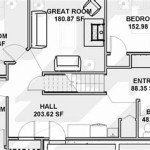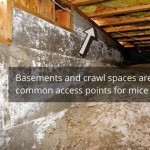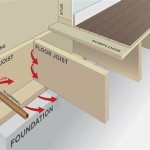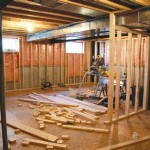How Do You Get A Musty Smell Out Of Your Basement?
A musty smell in a basement is a common problem for many homeowners. It signals the presence of mold and mildew, which thrive in damp, dark environments. Addressing this issue requires a multi-faceted approach, focusing on identifying the source of the moisture, eliminating it, and then thoroughly cleaning and deodorizing the affected area.
The musty odor isn't just unpleasant; it can also indicate health hazards. Mold spores can trigger allergic reactions, respiratory problems, and other health issues, particularly in individuals with sensitivities. Therefore, prompt and effective remediation is crucial for maintaining a healthy living environment.
Furthermore, ignoring a musty basement can lead to structural damage over time. Moisture can weaken wooden beams, corrode metal supports, and compromise the foundation of the house, resulting in costly repairs down the line. Addressing the problem early can prevent significant financial burdens and protect the integrity of the building.
Successfully getting rid of the musty smell necessitates a systematic approach that deals with the underlying cause of the problem. Masking the odor with air fresheners or other temporary solutions is ineffective and only provides a superficial fix. The following steps outline a comprehensive strategy for eliminating the source of the musty smell and creating a cleaner, healthier basement environment.
Identify and Eliminate the Source of Moisture
The first and most critical step in addressing a musty basement is to locate and eliminate the source of moisture. Mold and mildew cannot grow without a sufficient supply of water, so resolving the moisture issue is fundamental to preventing recurrence. Several potential sources of moisture need to be considered, including leaks, condensation, and inadequate ventilation.
Check for visible leaks in pipes, especially around joints and connections. Examine the walls and floor for water stains or damp patches, which may indicate leaks from outside the foundation. Pay particular attention to areas where pipes enter the basement or where the ground slopes towards the foundation.
Condensation can form on cold surfaces when warm, humid air comes into contact with them. This is particularly common on concrete walls and floors during warmer months. Ensure proper ventilation to reduce humidity levels and prevent condensation. A dehumidifier can also be used to maintain a lower humidity range.
Evaluate the exterior of the house for potential sources of water intrusion. Check the gutters and downspouts to ensure they are clean and properly directing water away from the foundation. Inspect the foundation for cracks or gaps, which can allow water to seep into the basement. Consider the grading around the house; the ground should slope away from the foundation to prevent water from pooling near the walls.
If a leaky appliance, such as a washing machine or water heater, is located in the basement, address the leak promptly. Even small leaks can contribute to moisture buildup and promote mold growth. Regularly inspect these appliances for signs of leaks and perform necessary maintenance to prevent future problems.
If the source of the moisture is unclear, consider hiring a professional to conduct a thorough inspection. They have the expertise and equipment to identify hidden leaks and assess the overall moisture levels in the basement. They can also provide recommendations for addressing more complex moisture problems.
Once the source of moisture has been identified and eliminated, it's essential to dry out the basement thoroughly. This can be achieved using fans, dehumidifiers, and, in some cases, professional drying equipment. Ensure adequate ventilation during the drying process to prevent moisture from becoming trapped in the walls and floors.
Clean and Disinfect Affected Areas
After addressing the source of moisture, the next step is to clean and disinfect the affected areas to remove mold and mildew and prevent their return. This process involves using appropriate cleaning solutions and techniques to effectively eliminate mold spores and any residual odors.
Before beginning the cleaning process, it's essential to take precautions to protect yourself from mold exposure. Wear gloves, a mask (preferably an N-95 respirator), and eye protection to prevent inhaling mold spores or getting them in contact with your skin. Ensure the area is well-ventilated during cleaning to minimize exposure to airborne spores.
For surfaces that are heavily contaminated with mold, consider using a solution of bleach and water. Mix one part bleach with ten parts water and apply the solution to the affected areas. Allow the solution to sit for 10-15 minutes to kill the mold, then scrub the surface thoroughly with a brush. Rinse the area with clean water and allow it to dry completely.
For porous surfaces, such as drywall or carpeting, that are heavily contaminated with mold, it may be necessary to remove and replace them. Mold can penetrate deep into these materials, making it difficult to completely eradicate. Consult with a professional to determine the best course of action for dealing with mold-infested porous materials.
For less severe mold growth on non-porous surfaces, such as concrete or tile, a variety of cleaning solutions can be used. Vinegar, baking soda, and commercial mold and mildew cleaners are all effective options. Follow the manufacturer's instructions carefully when using any cleaning solution, and always test the solution in an inconspicuous area first to ensure it doesn't damage the surface.
After cleaning, disinfect the affected areas with a solution of hydrogen peroxide or a commercial disinfectant. This will help to kill any remaining mold spores and prevent future growth. Apply the disinfectant to the surface, allow it to sit for the recommended amount of time, and then wipe it clean with a damp cloth.
Once the cleaning and disinfecting process is complete, dispose of all cleaning supplies, such as rags, sponges, and brushes, in sealed plastic bags to prevent the spread of mold spores. Thoroughly wash any clothing or personal protective equipment that may have been exposed to mold.
Improve Ventilation and Humidity Control
Maintaining proper ventilation and humidity control is crucial for preventing the recurrence of musty smells in the basement. By ensuring adequate airflow and keeping humidity levels within an acceptable range, one can create an environment that is less hospitable to mold and mildew growth.
Install exhaust fans in areas where moisture is likely to accumulate, such as near showers, washing machines, or any other water-using appliances. Ensure the fans are properly vented to the outside to effectively remove moisture from the basement. Regularly clean the fans to maintain their efficiency.
Open windows and doors periodically to allow fresh air to circulate through the basement. This is particularly important during dry weather. However, avoid opening windows during periods of high humidity, as this can introduce more moisture into the basement.
Consider using a dehumidifier to maintain a humidity level between 30% and 50%. This humidity range is generally considered ideal for preventing mold growth. Choose a dehumidifier that is appropriately sized for the size of the basement and empty the water reservoir regularly.
Ensure that the basement is adequately insulated to prevent condensation from forming on cold surfaces. Insulating walls and floors can help to maintain a more consistent temperature and reduce the likelihood of condensation. Consider using a vapor barrier to prevent moisture from penetrating the walls.
Seal any cracks or gaps in the foundation walls to prevent moisture from seeping in from outside. Use a waterproof sealant to fill any cracks or gaps and ensure that the sealant is properly applied to create a watertight barrier.
Regularly inspect the basement for signs of moisture or mold growth. This will allow you to identify potential problems early and take corrective action before they become more severe. Address any leaks or moisture issues promptly to prevent mold from developing.
Consider using a mold-resistant paint on the walls and ceilings of the basement. These paints contain additives that inhibit the growth of mold and mildew. They can provide an extra layer of protection against mold, particularly in areas that are prone to moisture.
By implementing these strategies for improving ventilation and humidity control, homeowners can significantly reduce the risk of musty smells and mold growth in their basements. A proactive approach to moisture management is essential for maintaining a healthy and comfortable living environment.

How To Get Rid Of Basement Odor Budgetdumpster Com

How To Get That Musty Smell Out Of Your Basement

How To Get That Musty Smell Out Of Your Basement

Eliminating Musty Odors Smells In Basements

Musty Basement Odor Removal Firestone Restoration

Get Rid Of Musty Odor In Basement Servicemaster Restore

A Useful Guide To Getting Rid Of Musty Basement Smells

How To Get Rid Of Musty Smell In Basement

Eliminate Musty Smell In Basement Homesteading Simple Self Sufficient Off The Grid Com

How To Get Rid Of Musty Basement Smell Effective Solutions







